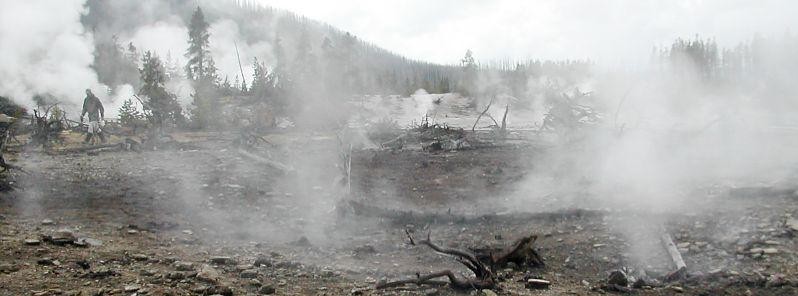Yellowstone earthquake activity returned to normal levels

Following several months of elevated seismicity, Yellowstone earthquake activity has returned to normal levels compared with typical background activity, the Yellowstone Volcano Observatory reported in their monthly update issued October 2, 2017.
During September 2017, the University of Utah Seismograph Stations, responsible for the operation and analysis of the Yellowstone Seismic Network, reports 115 earthquakes were located in the Yellowstone National Park region. The largest event was a minor earthquake of magnitude 3.2 at 06:38 UTC on September 17 (September 16, at 23:38 MDT), located about 17.7 km (11 miles) south of Old Faithful, WY. The earthquake was reported felt in Yellowstone National Park.
September seismicity in Yellowstone was marked by the ongoing seismic swarm ~10 km (6 miles) north of West Yellowstone, MT.
Activity in that swarm has waned, with 78 locatable earthquakes compared to the 894 in August, 475 in July, and 1 028 in June. The largest event of the swarm in September was M2.3 at 01:59 UTC on September 5 (September 3, at 18:59 MDT) 16 km (10 miles) north of West Yellowstone, MT.
Swarm activity for September consists of four earthquakes in the magnitude 2 range. Including the events from the prior three monthly reports beginning on June 12, total swarm seismicity includes one earthquake of magnitude 4.4, 12 in the magnitude 3 range, and 185 earthquakes in the magnitude 2 range.
There are potentially several additional earthquakes visible on the webicorders that cannot be located because they are too small or overlap another event and are not included in these numbers.
No other swarm seismicity was observed in Yellowstone during the month of September.
Earthquake sequences like that occurring north of West Yellowstone, MT, are common and account for roughly 50% of the total seismicity in the Yellowstone region.
Following several months of elevated seismicity, Yellowstone earthquake activity has returned to normal levels compared with typical background activity.
Ground deformation
Trends in ground displacement have remained consistent over the past several months. Uplift north of the caldera, centered near the Norris Geyser Basin and persistent since late 2015, continues at a low rate (a few millimeters per month).
Subsidence within the caldera is occurring at a similar rate and has been ongoing since late 2016. Current deformation patterns at Yellowstone remain within historical norms.
Featured image: Norris-2003. Set of frying pan springs located between Porkchop Geyser and Bastille Geyser, Yellowstone National Park.

Any new massive solar flares or intense Galactic cosmic rays that impact Earth’s magnetosphere will definitely trigger massive eruption of Yellowstone and other large volcanoes. This is due to the fact, that energy at the Earth’s core is approaching its maximum level. Yellowstone will erupt and also so many other volcanoes, especially the ones located on the ring of fire.
How long do you think we have?